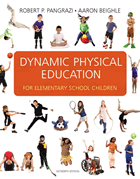EDITORIAL
Readers
Respond to Guns in Schools Editorial
 Last
month I focused most of the editorial
on the tragic shootings at Sandy Hook Elementary
School. I suggested that guns had no place
in our public schools, and disagreed with
the proposal by the CEO of the NRA to place
armed guards in all schools nationwide. Last
month I focused most of the editorial
on the tragic shootings at Sandy Hook Elementary
School. I suggested that guns had no place
in our public schools, and disagreed with
the proposal by the CEO of the NRA to place
armed guards in all schools nationwide.
I pointed out that public school students
are exposed to potential armed predators in
so many ways that the presence of an armed
guard could never guarantee their safety.
Would it minimize the risks they face? Possibly
I guess, that is if the armed guard happened
to be in the right place at the right time
to intercede before violence occurred. And
perhaps it's true as some have suggested,
that those determined to kill would choose
to avoid public schools if they knew they
were protected by armed security. But isn't
it more likely that killers would simply become
more selective in planning their strategy?
After all, it seems that people who use guns
to shoot children are not particularly interested
in escaping.
Many readers contacted me, similarly appalled
at the thought of more guns in our schools.
It's noteworthy that the national elementary
and secondary principals' associations, the
American Federation of Teachers, and the National
Education Association all expressed opposition.
Those most intimately involved in public school
education clearly do not see the addition
of more guns and armed guards as the solution
to school shootings.
But others expressed different opinions.
I had suggested that the presence of armed
guards would transform the way in which physical
education is taught. One physical educator
pointed out that policemen or airport security
guards did not affect how he behaved, and
that an armed school guard would not affect
his teaching. Furthermore he suggested their
very presence in all likelihood would deter
violence. I guess I had in mind the thought
that physical educators, fearful of violence,
would likely become more reluctant to teach
their students on playgrounds, fields, or
in outdoor facilities.
One reader expressed concern at the message
that the NRA proposal sent to our young and
impressionable children: "Might makes
right, and violence should be met with violence."
He, like me, wondered how many guns could
possibly be enough? He pondered how long it
would be before someone suggested that we
arm all schoolchildren so that they are ready
to defend themselves. He reported that a school
district in northwest Ohio had already approved
a plan to arm its janitors. For some reason
that decision does little to convince me that
it's K-12 students will be more secure.
Just this morning there was a report
on the radio of a "good guy with a gun"
who found himself in the middle of the 2005
Tacoma shopping mall shooting. We learned
that he carried a handgun thinking that one
day he might be able to prevent a tragedy.
But instead of using his gun when confronted
by the shooter he responded by urging the
man to stop shooting. He was immediately shot
multiple times.
A firearms expert commented that this individual
erred by not immediately eliminating the threat
using his firearm. The expert noted however, that preparing an individual to respond this
way demanded regular training. Is it truly
realistic for us to have any confidence that
janitors, teachers, or even school security
guards would be adequately prepared to respond
correctly in the face of a surprise school
attack?
Mark Shepard, the Executive Director of the
Mountain States Chapter of "Paralyzed
Veterans of America" suggested that recent
calls for tighter gun-control restrictions
reflected a knee-jerk reaction based on dissatisfaction
and frustration with our level of personal
and social security. He pointed out that gun
law legislation would not change many of the
socially dysfunctional behaviors evident in
today's society. He believed that the presence
of visible police officers and security guards
in schools was needed in a society that has
become desensitized to violence (as is evident
for example, in video games and movies).
I'm hopeful that discussion about ways to
prevent gun violence in our public schools
can make progress. While I understand, and
can agree, that resolving the problem involves
more than just passing gun laws, it's disappointing
to me that those who wish to talk about the
prevalence of firearms invariably be labeled
as opponents of Second Amendment rights. While innuendo may be an effective
way of rallying gun
rights' advocates, it inhibits intelligent
discussion about the recent tragedy that occurred
in Newtown and other tragedies almost certainly
yet to come.
What’s New in this Month's
Issue of pelinks4u?
I routinely wonder how many people actually
read pelinks4u. Sure there are ways
to tally the number of visitors to the website.
I also know that the email digest of the content
of each month's edition of pelinks4u,
sent out as "PE NEWS," goes to more
than 30,000 addresses. Typically mailed out
about mid-month we see a spike in visits soon
after this mailing, which gives me hope that
our efforts are making some sort of a difference.
Of course like you, the spare time I have
for reading is very limited. My regular university
teaching job confines me to the computer much
more than I'd prefer. So I do want to sincerely
thank those of you who not only take the time
to peruse the content of pelinks4u,
but also email comments to me and sometimes
offer to contribute an article.
If you are one of our regular readers you'll
know that a few of our writers have been doing
so since we began 15 years ago. Today, many
of our contributors send us submissions every
few months. We've also done some recruiting,
and have enjoyed hearing from teaching colleagues
who have ideas they want to share. Sometimes
I'll encourage people to write for us, but
frequently get the impression they don't really
think they have much to contribute.
Of course this isn't true. Anyone who spends
time teaching physical education, health education,
or coaching sports is constantly having experiences
worth sharing. Getting them to put something
to paper is the challenge! If you haven't
already contributed, I encourage you to set
a goal of sharing something with us in the
future.
This month, we
have some top-quality articles that are worth
reading. They cover the following topics:
- Celebrating Heart Month
- Using heart rate monitors in physical
education
- The use of technology when coaching
- Psychological skills training
- "Circus Arts" in elementary
physical education
- Common health conditions and adaptations
when teaching students with special needs
- Teaching dance with PETE students
I also urge you to browse the items we include
in the "NEWS" columns. We carefully
select these from a variety of sources, and
try to link to stories that might interest
you. It's fun to set aside about an hour each
month to learn a little bit more about what
is happening outside of our programs and schools.
If you are interested in grants - something
I'm often asked about - this column is where
we post grant information we hear about.
Finally, I would be remiss in not encouraging
you to visit the websites of those companies
and organizations that support pelinks4u,
and whose banners and logos appear on our
pages. Many of these site sponsors have also
loyally been with us since we started, and
are genuinely interested in supporting the
ongoing improvement of physical education.
Their support is greatly appreciated.
As we start to emerge from winter, I hope
you have a great month and are perhaps planning
to attend the upcoming national AAHPERD
convention in Charlotte this April. I'm
involved in planning another PE 2020 Forum
to be held on Tuesday, April 23. It would
be great to see you there, and hear your thoughts
about future directions for physical education.
Steve
Jefferies, publisher pelinks4u
|














 Last
month I focused most of the
Last
month I focused most of the 